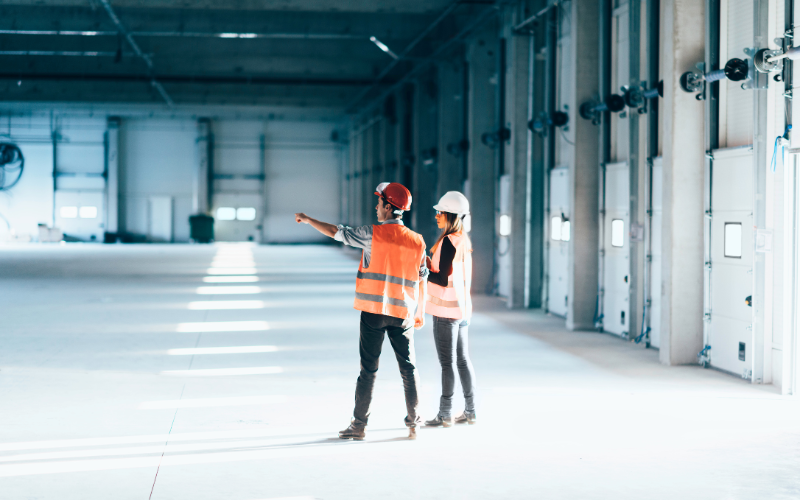As we commemorate World Facilities Management Day on 14 May 2025, it’s essential to shine a spotlight on the often overlooked yet critically important role that Facilities Managers (FMs) play in the lifecycle of green buildings. While the architects, developers, and designers may receive the accolades for their aesthetic visions of the buildings, FMs are the unsung heroes who ensure that those visions transform into functional, efficient, and safe spaces for the occupants.
The Unsung Guardians of Our Built Environment
Facilities Managers are the backbone of buildings, yet their contributions often go unnoticed. They work behind the scenes, putting in countless hours to guarantee that we can conduct our daily activities – work, shop, exercise – within buildings that function as intended. Their roles are complex and multifaceted, incorporating everything from maintenance and safety to sustainability, operational efficiency, and space optimisation. Despite their crucial contributions, FMs tend not to be the ones who shout about their accomplishments and contributions. Instead, they often operate with a quiet diligence, ensuring that our built environments are contributing to our productivity, health, and well-being.
Building Lifecycles and Beyond
The lifecycle of a building, which involves its design, construction, operation, and eventual decommissioning, requires continuous attention to maintain its integrity and functionality. Facility Managers are involved at every stage:
Design and Construction: FMs should be involved early on with architects and contractors to work together to make informed decisions about materials and systems that can enhance sustainability and operational efficiency from the beginning.
Operation: Once a building is occupied, FMs take charge of daily operations, ensuring that systems such as HVAC, lighting, and water use are optimised for energy efficiency.
- Sustainability Initiatives: In recent years, FMs have been increasingly tasked with positioning buildings as environmentally conscious entities. They champion sustainable practices, promote recycling programs, manage waste reduction efforts, and educate occupants about their roles in creating a greener environment.
- Maintenance and Upkeep: The longevity of green buildings is directly tied to effective maintenance strategies employed by FMs. They monitor building conditions, ensuring that green technologies operate efficiently and effectively throughout the building’s lifecycle.
- Renewal and Decommissioning: As buildings age, FMs are there to assess and evaluate the need for renovations or updates to ensure the building remains useful over the years of operation and that the updates required meet sustainability standards. Their insights help prolong the life of our built environment while minimising waste and resource consumption.
The Shift Toward Sustainability
The last few years have seen a focus on sustainability, and FMs find themselves at the forefront of this movement. Their role has evolved beyond simple maintenance; they are now environmental stewards and are responsible for integrating sustainable practices into everyday operations and ensuring that the building environment contributes positively to our using the spaces.
This shift toward sustainable buildings is driven by several factors, including:
- Environmental Impact: Traditional buildings contribute significantly to carbon emissions, resource depletion, and waste. Green buildings aim to reduce these negative effects through energy-efficient technologies, renewable energy integration, and sustainable materials.
- Cost Savings: While green buildings may require a higher initial investment, they often lead to significant savings over time due to reduced energy consumption, lower water usage, and fewer maintenance requirements. The cost benefits can be particularly attractive to businesses looking to reduce operating costs.
- Health and Well-being: Green buildings often prioritise the health and well-being of their occupants by providing better air quality, natural lighting, and indoor environments that promote productivity and comfort which creates spaces that are not only functional but also uplifting.
- Regulatory Compliance: Governments worldwide are directing stricter regulations on energy efficiency and sustainability. Green buildings help companies and organisations stay ahead of the curve when it comes to complying with these environmental regulations.
FMs are looking to implement a variety of strategies that promote sustainable building practices, such as:
- Energy Management: By using energy-efficient systems, routinely auditing consumption, and investing in renewable energy sources, FMs help reduce the carbon footprint of their buildings.
- Water Conservation: FMs oversee the installation of low-flow fixtures, rainwater harvesting systems, and drought-resistant landscaping to promote water efficiency.
- Waste Management: They establish recycling and composting initiatives that minimize waste and encourage responsible disposal practices within the building.
- Certifications: Many green buildings aim for certification through Green Star, Net Zero and EDGE tools in the South African context. FMs play a key role in ensuring the building meets the rigorous standards required for these certifications, maintaining compliance with sustainability guidelines, and tracking performance.
Recognising Their Contributions
Every World Facilities Management Day is an opportunity to acknowledge the invaluable work of Facilities Managers. Their roles are critical for the success of green buildings, and as we advance towards a more sustainable future, it’s vital to recognise them as key leaders in our built environment. Let us celebrate these underrated building guardians, whose commitment improves our quality of life. FMs deserve recognition not just for keeping our spaces operational but for ensuring that our environments are safe and pleasant while promoting sustainable practices that benefit the planet.



